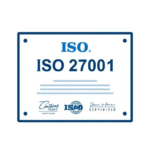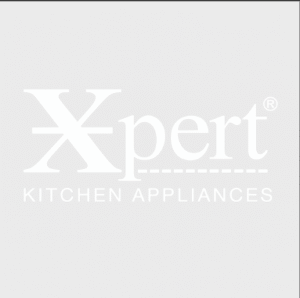In industries where machinery and motors are a big part of operations, Drive Panels and Starter Panels play an important role. Choosing the right one can affect performance, energy use, and even maintenance costs. Many people often confuse these two, but they serve different purposes and operate differently.
In this guide, we’ll explain everything you need to know about Drive Panels and Starter Panels. Whether you’re an engineer, technician, or a business owner looking to upgrade your system, understanding the Drive Control Panel and its differences from the Starter Panel will help you make smarter choices.
Let’s get started.
What Is a Drive Panel?
A Drive Panel is used to control the speed, torque, and direction of an electric motor using a Variable Frequency Drive (VFD). It is also called a Drive Control Panel.
These panels are commonly found in systems where speed control is critical, such as:
-
Conveyors
-
Pumps
-
Fans
-
HVAC systems
They are built by Control Panel Manufacturers who design them based on power needs, motor size, and system load.
Key Features of a Drive Panel
-
Uses VFD for motor speed control
-
Reduces energy consumption
-
Offers soft start and stop
-
Protects motors from overload and faults
-
Allows remote and automatic control
What Is a Starter Panel?
A Starter Panel, also known as a Motor Starter Panel, is used to start and stop a motor. It provides the initial power needed to get the motor running. Once the motor starts, it runs at full speed.
These panels are simpler compared to Drive Panels and are ideal for systems that don’t need speed control.
Common applications include:
-
Compressors
-
Crushers
-
Mixers
-
Basic water pumps
Key Features of a Starter Panel
-
Direct motor starting
-
Uses contactors and overload relays
-
Lower cost
-
Simple wiring
-
Limited to start/stop control
Drive Panel vs. Starter Panel: Side-by-Side Comparison
Let’s break down the key differences between Drive Panels and Starter Panels in a clear and easy format.
| Feature | Drive Panel | Starter Panel |
|---|---|---|
| Motor Speed Control | Yes (Variable) | No (Fixed) |
| Component Used | VFD | Contactor, Overload Relay |
| Energy Efficiency | High (up to 30% savings) | Low |
| Cost | Higher initial cost | Lower cost |
| Maintenance Needs | Moderate | Low |
| Applications | Pumps, HVAC, Conveyors | Compressors, Mixers, Crushers |
| Flexibility | High | Limited |
| Safety Features | Advanced protection features | Basic protection only |
| Remote Operation | Yes | Limited |
| Noise and Vibration | Lower (Soft Start) | Higher (Sudden Start) |
Why Drive Panels Are Gaining Popularity
With growing energy costs and demand for automation, Drive Panels are becoming more common. Businesses want more control over their operations, and a Drive Control Panel provides that.
Some real benefits include:
-
Energy Savings: VFDs can cut energy use by 20–50% in fan and pump systems.
-
Reduced Wear and Tear: Smooth motor start reduces mechanical stress.
-
Smart Control: Integration with PLCs and HMIs makes them ideal for modern systems.
-
Environment Friendly: Lower energy use means fewer carbon emissions.
When to Choose a Starter Panel
While Drive Panels offer more features, Starter Panels are still a solid choice for many use cases.
You should go with a Starter Panel if:
-
You need a simple on/off control
-
The motor runs at a constant speed
-
Cost is a big concern
-
You’re handling low-power motors
Starter Panels are reliable and easy to maintain, making them great for small businesses or basic operations.
Key Components Inside a Drive Panel
Understanding the internal parts helps in better planning and maintenance. A typical Drive Control Panel includes:
-
VFD (Variable Frequency Drive): The heart of the system
-
MCB/MCCB: Protection against overcurrent
-
Contactor and Overload Relay: For switching and safety
-
Input/Output Terminals: For wiring connections
-
Cooling Fans or Heat Sinks: To prevent overheating
-
Control Circuit: Enables automation
Key Components Inside a Starter Panel
Here’s what you’ll usually find inside a Starter Panel:
-
Contactor: Opens and closes the electrical circuit
-
Overload Relay: Protects the motor from overheating
-
Push Buttons or Selector Switches: For manual control
-
Indicator Lamps: Show panel status
-
MCB/MCCB: Circuit protection
While it’s simpler, it still provides necessary protection and basic control.
How Control Panel Manufacturers Help You Choose the Right Panel
Control Panel Manufacturers play a key role in designing the right panel for your needs. They evaluate:
-
Load capacity
-
Motor specifications
-
Type of application
-
Environmental conditions
-
Safety standards
A good manufacturer will offer both off-the-shelf and custom panels. They ensure the panel meets national and international safety norms like IEC, UL, or NEMA.
Energy Use: A Major Factor in Decision Making
One of the biggest reasons to switch from a Starter Panel to a Drive Panel is energy savings.
According to the U.S. Department of Energy:
VFDs can reduce energy consumption in motor-driven systems by up to 50%.
For example, in pump systems where flow changes throughout the day, a Drive Panel can adjust speed and save thousands in electricity over a year.
Starter Panels, on the other hand, keep the motor running at full speed, even when it’s not needed.
Maintenance and Safety Considerations
Both panels have safety features, but Drive Panels provide better motor protection.
Drive Panel Maintenance Tips
-
Keep VFDs dust-free and cool
-
Check wiring connections regularly
-
Monitor for fault codes
-
Update firmware if needed
Starter Panel Maintenance Tips
-
Inspect contacts and relays
-
Look for signs of wear
-
Ensure proper grounding
-
Clean the enclosure
Regular maintenance improves lifespan and reduces downtime.
Real-World Use Cases
Example 1: Water Treatment Plant
A water treatment plant upgraded from Starter Panels to Drive Panels for its pumping system. As a result:
-
Energy use dropped by 28%
-
Maintenance issues were reduced
-
Operators gained better flow control
Example 2: Manufacturing Factory
A factory with conveyor belts used Starter Panels and faced problems with sudden motor starts. After shifting to Drive Panels:
-
Motors lasted longer
-
Noise was reduced
-
Output increased due to better speed control
What to Consider Before Buying
Before making your decision, ask the following:
-
Do I need speed control?
-
What is the power rating of the motor?
-
How often will the system run?
-
What is the total cost of ownership (not just the upfront cost)?
-
Is energy efficiency a priority?
Answering these can help you decide between a Drive Panel and a Starter Panel.
FAQs
What is the main difference between a Drive Panel and a Starter Panel?
A Drive Panel controls the speed of a motor using a VFD, while a Starter Panel simply starts and stops a motor at full speed.
Who should use a Drive Control Panel?
Industries needing speed control, energy savings, and automation—like HVAC, water treatment, and manufacturing—should consider Drive Control Panels.
How do Control Panel Manufacturers customize panels?
They assess motor size, load type, system voltage, and user needs to design panels that fit specific applications.
Will a Drive Panel save me money on energy?
Yes. VFDs in Drive Panels can cut energy use by 20–50%, depending on the application.
Where is a Starter Panel more useful?
In systems that don’t need variable speed or automation, like basic pumps or mixers, Starter Panels are more cost-effective.
Why do many businesses switch to Drive Panels?
To improve control, lower energy bills, and extend motor life with smooth starts and stops.
How often should a Drive Panel be serviced?
Basic checks every 3–6 months are recommended, with deeper inspection annually.
Final Thoughts
Choosing between a Drive Panel and a Starter Panel isn’t just about the cost. It’s about matching the system to your operational goals. If you’re looking for advanced features, better energy control, and long-term savings, a Drive Control Panel is worth the investment.
However, if you need a simple, budget-friendly solution, a Starter Panel will do the job just fine.
Make sure to consult experienced Control Panel Manufacturers before making a decision—they can help you choose the right panel for your specific needs.
Remember, the right panel today can save you from higher costs tomorrow.
If you need help selecting the best control solution, always look for trusted Control Panel Manufacturers with proven experience in your industry.
- Drive Panel vs. Starter Panel: Key Differences
- Learn the main differences between Drive Panel and Starter Panel. Understand functions, uses, and how Control Panel Manufacturers build them.
- Drive Panel,Drive Control Panel,Control Panel Manufacturers
Related posts:
 Discover the Best Full Body Massage Experience in Lancaster, PA with Focused Care Therapeutic Massage
Discover the Best Full Body Massage Experience in Lancaster, PA with Focused Care Therapeutic Massage
 ISO 27001 Training: A Real-World Lifeline to Reduce the Risk of Data Breaches
ISO 27001 Training: A Real-World Lifeline to Reduce the Risk of Data Breaches
 How Instagram Stories Help Businesses: A 2025 gerat Guide ..
How Instagram Stories Help Businesses: A 2025 gerat Guide ..
 “GV GALLERY® || TheGv Gallery Shop || Official Clothing Store “
“GV GALLERY® || TheGv Gallery Shop || Official Clothing Store “
 Don’t Miss Out on today’s Best Sale Offer with Huge Discounts!
Don’t Miss Out on today’s Best Sale Offer with Huge Discounts!
 Why Smart Entrepreneurs Trust a Certified Tax and Business Advisor Over DIY Tax Tools
Why Smart Entrepreneurs Trust a Certified Tax and Business Advisor Over DIY Tax Tools
 Web Design Agency Netherlands: Elevate Your Online Presence with Creative Excellence
Web Design Agency Netherlands: Elevate Your Online Presence with Creative Excellence
 Comprehensive Seed Industry Analysis: Trends & Market Insights
Comprehensive Seed Industry Analysis: Trends & Market Insights








